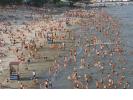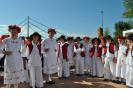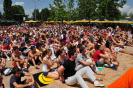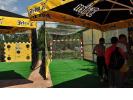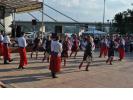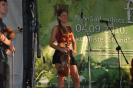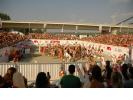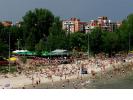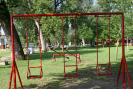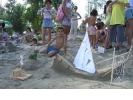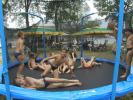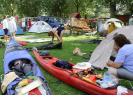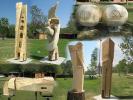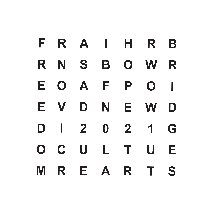Štrand
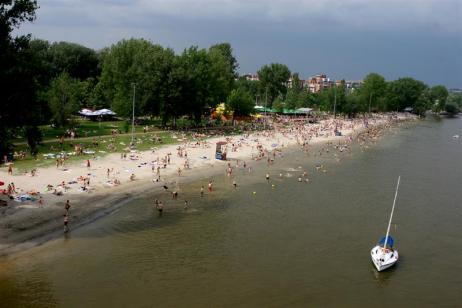
Arguably one of the most beautiful beaches on the Danube, Štrand officially opened its doors to public in 1911, although it had been immensely popular among the city people long before that. In the late 19th century, one of the most popular city beaches was The Štengl Danube Baths, i.e. the 'Schwimmschulen'. The shallows were full of rafts floating on barrels from which people could jump or dive into the water. Bathing suits of the time hardly resemble what people wear today. They used to cover much more than they uncovered. Along with the ticket, each visitor would be given a swimsuit which was tailored to appeal even the most conservative tastes. Even that long ago, the beach boasted excellent lifeguard service, as well as swimming trainers. There are many accounts of numerous other smaller Danube beaches, on both river banks, visited mainly by those who could not afford the Štrand entry fee. After introducing wooden changing cabins in 1913, a box office, bicycle storage-rooms, showers, restaurants, pavilions, trampolines, diving platforms, a boat rental service, alleys, and landscape greenery, Štrand became very well capable of indulging even the most demanding visitors seeking refreshment and recreation.
By the end of the 1920s, Štrand had witnessed some rather significant changes. Unisex beaches were introduced. Swimsuits were becoming tinier than ever and they attracted plenty of attention. First coffee houses opened, playgrounds, swings, as well as live music. The huge wooden restaurant, which occupied the central lot of Štrand, was completely consumed by the great fire in 1950. Miloš Crnjanski was one of many people who often frequented the city beach, and always thought of Štrand as Novi Sad's greatest place of interest on the Danube.
For many years, the famous street cart Trčika transferred people from the railway station to the beach, although many of them preferred boats or carriages instead. Sport has always been a favorite Štrand pastime. After the WWI, Soko Sport Association used Štrand as its gymnastics training ground. After the WWII, it was used by Partizan. Štrand has also become widely-known for picigen, keč-ket, berugaš, kurendol, and headball – all of which are considered to be sport 'disciplines' indigenous to Novi Sad.
Aiming to please the visitors, since 2008 Štrand remains open all-year-round. Today, the city beach features two basketball courts, three volleyball courts, a mini-golf field, a climbing facility, and several playgrounds. There are more than 400 hundred trees of mainly indigenous species, flower pots, decorative plants and lawns, all of which guarantee a rather pleasant stay. Lifeguard service, security personnel and the police make sure all visitors are safe and sound. Throughout the season – which starts May 1st and ends September 30th – the itinerary is full of concerts, sport competitions and various cultural events. Four years in a row, at the foot of the Sloboda Bridge, the beach hosts the VIP Challenger Beach Volley Tournament. This year, Štrand hosted the Beach Volley European Championship.
During the Exit festival, Štrand hosts daily beach parties. Other well-known festivals, such as Vojvodina Fest and The Call of the Flatlands, attract culture, film, folk dance, music, cuisine and wine connoisseurs. In addition to several sport tournaments, Štrand hosts many children festivals. For 56 years in a row, the city beach has also been a must-see port of call for the Danube Regatta - the world's longest international regatta.
The annual number of visitors to Štrand amounts to several hundred thousand. Owing to the city authorities and PUE City Greenery who take excellent care of the beach, Štrand has been constantly developing into a modern facility. Despite the modernization, the city beach manages to maintain the well-known charm of the good old days and is, therefore, still immensely popular with residents.




